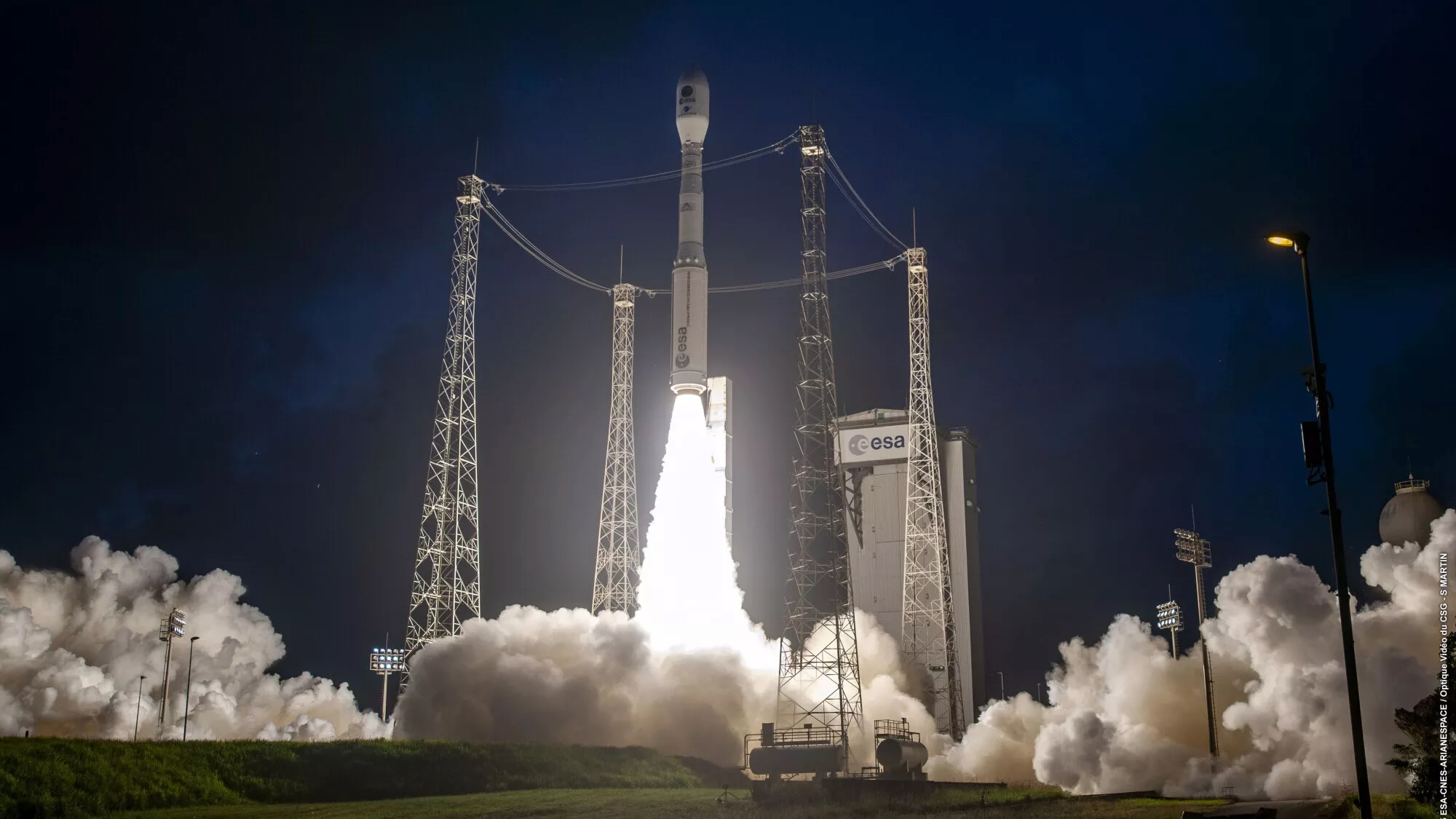Vol VV27 | CO3D / Microcarb | Vega C I Arianespace - YouTube

A carbon dioxide-mapping satellite and four Earth-observation spacecraft are scheduled to launch tonight (July 25) from South America, and you can watch the action live.
A Vega C rocket, operated by the French company Arianespace, is scheduled to lift off from Europe's Spaceport in Kourou, French Guiana tonight at 10:03 p.m. EDT (11:03 p.m. local time in Kourou; 0203 GMT on July 26).
You can watch live here at Space.com in the window above, courtesy of Arianespace, or directly via the company. Coverage will begin at 9:40 p.m. EDT (0140 GMT on July 26).

The four-stage, 115-foot-tall (35 meters) Vega C is carrying five satellites on this mission, which Arianespace calls VV27.
One is MicroCarb, a project led by the French space agency CNES. This 400-pound (180-kilogram) satellite "is designed to map sources and sinks of carbon dioxide (CO2) — the most important greenhouse gas — on a global scale," CNES officials wrote in a mission description.
MicroCarb will be able to determine CO2 concentrations with a precision of one part per million. The satellite will operate in sun-synchronous orbit at an altitude of 404 miles (650 kilometers), for at least five years, if all goes to plan.
The other four satellites will make up CNES' CO3D ("Constellation Optique en 3D") Earth-observing constellation. Each spacecraft in the quartet weighs about 550 pounds (250 kg) and will operate in sun-synchronous orbit at an altitude of 312 miles (502 km) for at least six years, according to CNES.
The satellites, which were built by Airbus, "have a unique optical instrument with a spatial resolution of approximately 50 cm [20 inches] in the red, green and blue visible bands and in the near-infrared," CNES wrote in a mission description. "After processing on the ground, their data will yield 3D maps of all of Earth’s land surfaces between -60 degree and +70 degree latitudes."
The CO3D satellites are scheduled to be deployed around 57 minutes after liftoff tonight, and MicroCarb will follow suit 44 minutes later.
VV27 will be the fifth launch overall for the Vega C, and the third since an anomaly in the rocket's second stage caused a mission failure in December 2022.
The most recent two flights have been successful: The Vega C lofted the Sentinel-1C Earth-observation satellite and Biomass forest-monitoring spacecraft, both of them European Space Agency missions, in December 2024 and April 2025, respectively.

.jpg) 17 hours ago
1
17 hours ago
1
 English (US)
English (US)